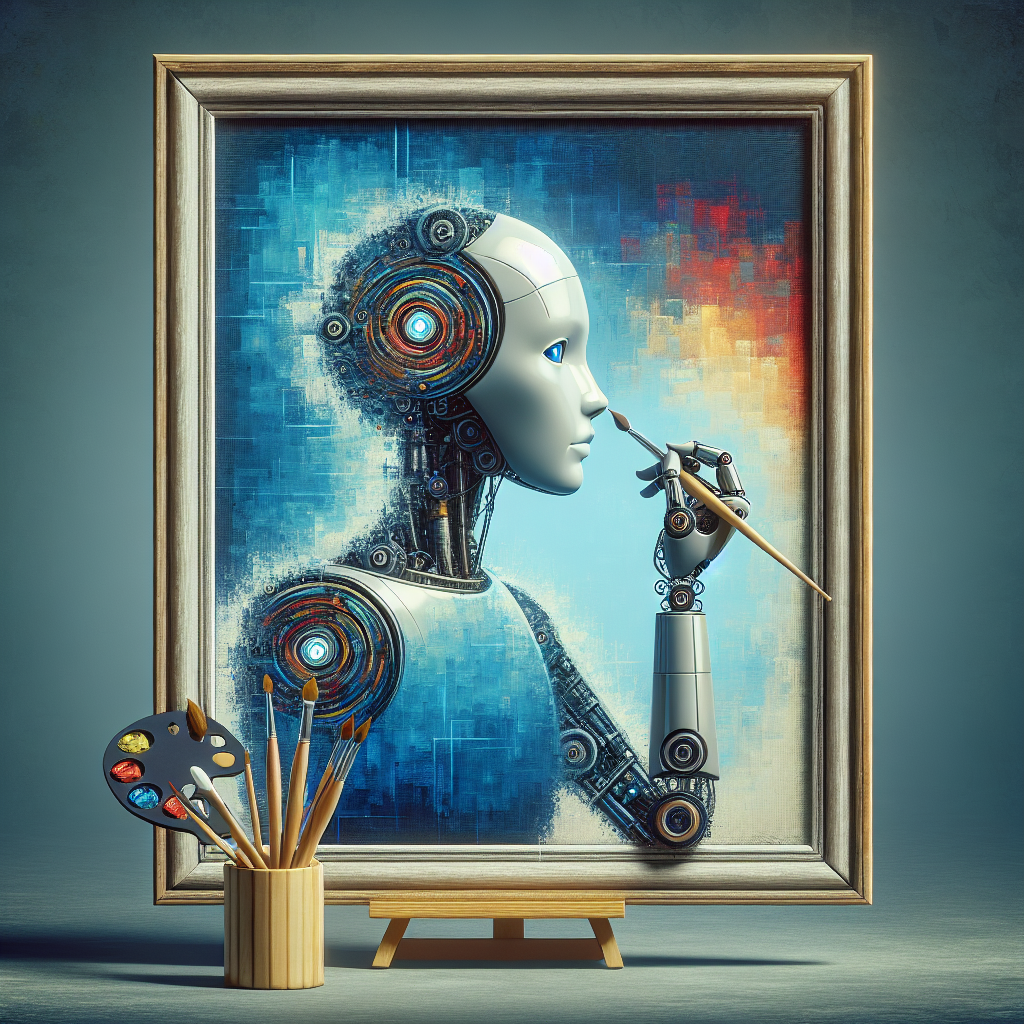Artificial intelligence (AI) has made significant advancements in recent years, with its capabilities expanding into various fields such as healthcare, finance, and gaming. One area where AI is making waves is in the realm of art. Can AI create true art? This question has sparked debates among artists, technologists, and the general public.
AI has been used to create music, poetry, and visual art. One of the most well-known examples is Google’s DeepDream, a program that uses neural networks to create psychedelic images based on existing artworks. Another example is Aiva, an AI composer that creates original music compositions. These creations have garnered attention and praise, but the question remains: can AI truly create art that is on par with human creations?
Proponents of AI-generated art argue that the technology has the potential to push the boundaries of creativity and innovation. AI can analyze vast amounts of data and generate unique patterns and ideas that may not have been possible for humans to conceive. This can lead to new forms of artistic expression and inspire artists to explore new possibilities. Additionally, AI can work tirelessly and produce art at a rapid pace, allowing for experimentation and iteration that may not be feasible for human artists.
Critics, on the other hand, argue that AI lacks the emotional depth and personal experience that humans bring to their art. Art is often seen as a reflection of the human experience, with artists drawing from their emotions, beliefs, and experiences to create meaningful works. AI, by its nature, lacks these qualities and may produce art that feels sterile or devoid of meaning. Critics also argue that AI-generated art is simply a mimicry of human creativity, lacking the authenticity and soul that defines true art.
One of the main challenges in determining whether AI can create true art lies in defining what “true art” is. Art is a subjective and deeply personal experience, with each individual interpreting and experiencing art in their own unique way. Some may argue that true art is defined by its ability to evoke emotion, challenge conventions, or convey a powerful message. Others may define true art as a reflection of the artist’s skill, technique, and vision.
In the realm of AI-generated art, these definitions become blurred. Can art created by a machine evoke emotion? Can it challenge conventions or convey a powerful message? Can it be considered true art if it lacks the human touch and personal experience that defines traditional art? These are questions that continue to fuel the debate surrounding AI and art.
Despite these challenges, AI has shown promise in creating art that is both innovative and compelling. AI-generated art has been featured in galleries, museums, and exhibitions around the world, showcasing the potential of this technology to inspire and captivate audiences. Artists and technologists are collaborating to explore new ways of integrating AI into the creative process, leading to exciting new possibilities in the world of art.
As AI continues to evolve and improve, the question of whether AI can create true art will likely remain a topic of discussion for years to come. While AI may never fully replicate the emotional depth and personal experience that humans bring to their art, it has the potential to expand the boundaries of creativity and inspire new forms of artistic expression. Whether AI can create true art ultimately depends on how we define and perceive art in the digital age.
FAQs:
Q: Can AI truly create art?
A: AI has shown the potential to create art that is innovative and compelling. While it may lack the emotional depth and personal experience that humans bring to their art, AI-generated art has the ability to inspire and captivate audiences.
Q: What is the difference between AI-generated art and human art?
A: The main difference between AI-generated art and human art lies in the emotional depth and personal experience that humans bring to their art. AI lacks these qualities but can produce art that is innovative and unique in its own right.
Q: Can AI ever replace human artists?
A: While AI has the potential to assist and inspire human artists, it is unlikely to fully replace them. Art is a deeply personal and subjective experience, and the emotional depth and personal experience that humans bring to their art cannot be replicated by machines.
Q: How can AI enhance the creative process for artists?
A: AI can analyze vast amounts of data and generate unique patterns and ideas that may inspire artists to explore new possibilities. AI can also work tirelessly and produce art at a rapid pace, allowing for experimentation and iteration that may not be feasible for human artists.

